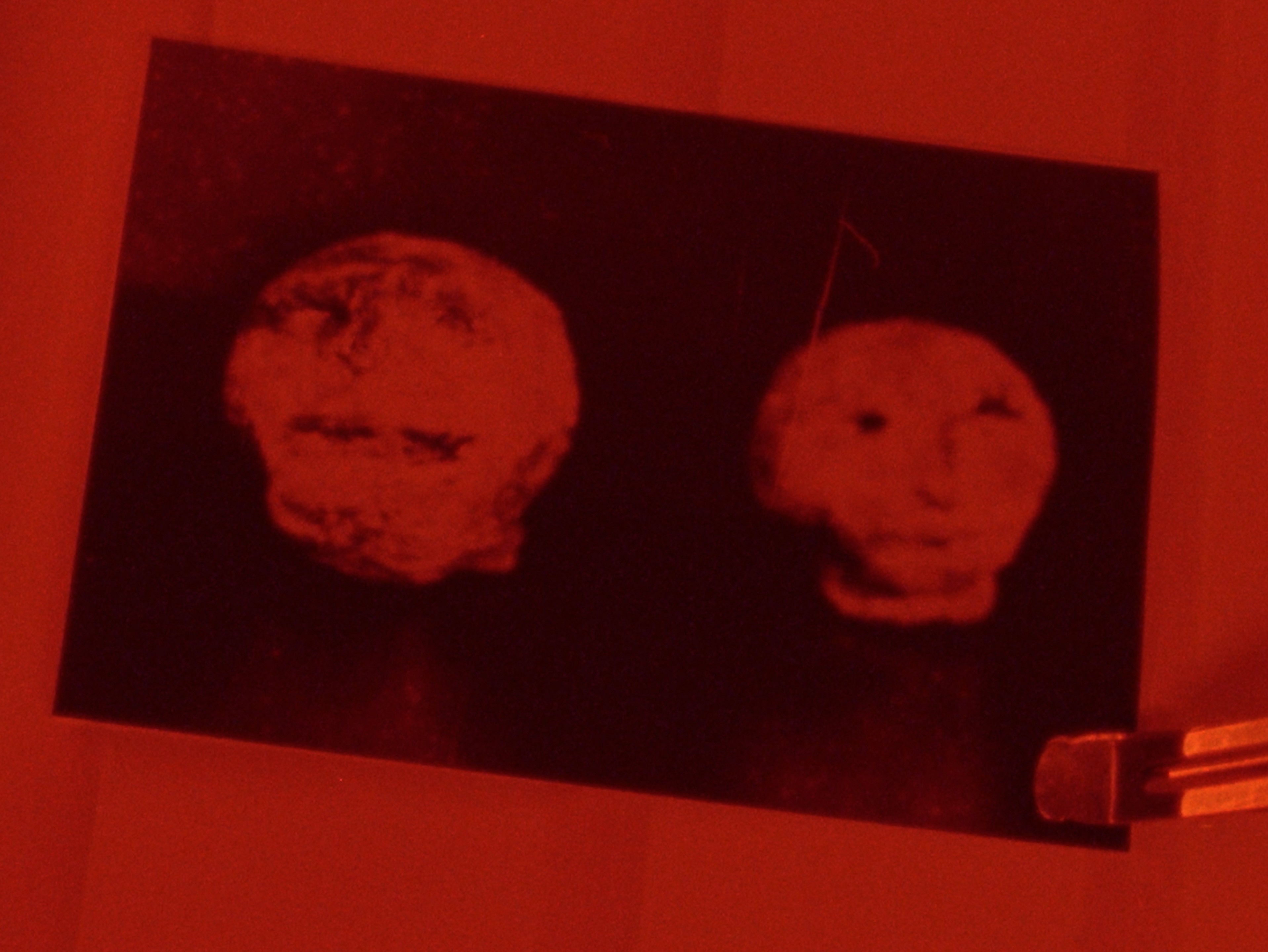
In 1971, a family living in the town of Hexham was plagued by a series of paranormal events. After bringing a pair of small stone heads into their home, the family became terrorized by the ghostly sounds and images these objects exerted. Hexham Heads adopts an impressionistic approach to this contemporary folk tale.
EN
“Tinted by the red safelight of the darkroom, the film (re)constructs a breathless pastoral horror about a place crystallised in time and terrorised by two 6cm tall stone heads whose current location remains unknown. We visit Rede Avenue – the original source of this supernatural energy – through the shivery stillness of Chloë Delanghe’s grainy photographs and an erratic composition of Sam Comerford performed by an ensemble of musicians across Ireland and Belgium. In Hexham Heads the joint mysteries of photosensitivity and the stone tape theory – which speculates on how minerals can record and replay the energy of hauntings – create a volatile chemical reaction. Delanghe and Driesen defy the impossibility of capturing ghosts in the lens by immersing us in a psychogeographical journey through infinite doors, windows and passages.”
Ane Lopez1
“A film that is both theoretical and sensorial at the same time, in short, in which the reflection on images, cinema and genre becomes one with the filmic experience, with the uneasiness generated by an atypical and unconventional horror, in the challenge, perhaps impossibility, of giving a new weight to images and to our way of looking at them.”
Mattia Caruso2
- 1Ane Lopez, “Programmer’s Note,” Berwick Film & Media Arts Festival.
- 2Mattia Caruso, “Hexham Heads di Chloë Delanghe Mattijs Driesen,” Pointblank. Translation by elephy.

